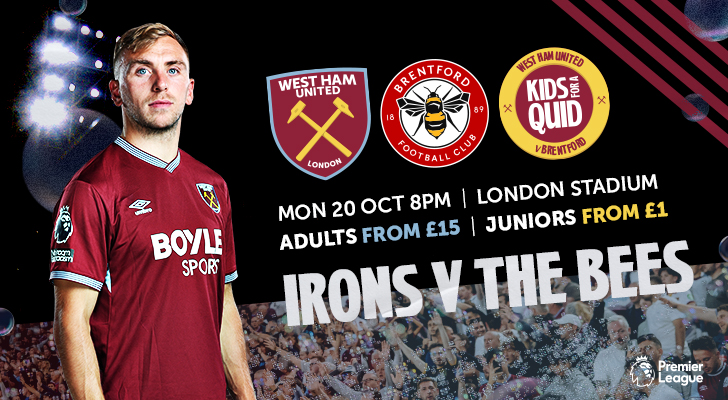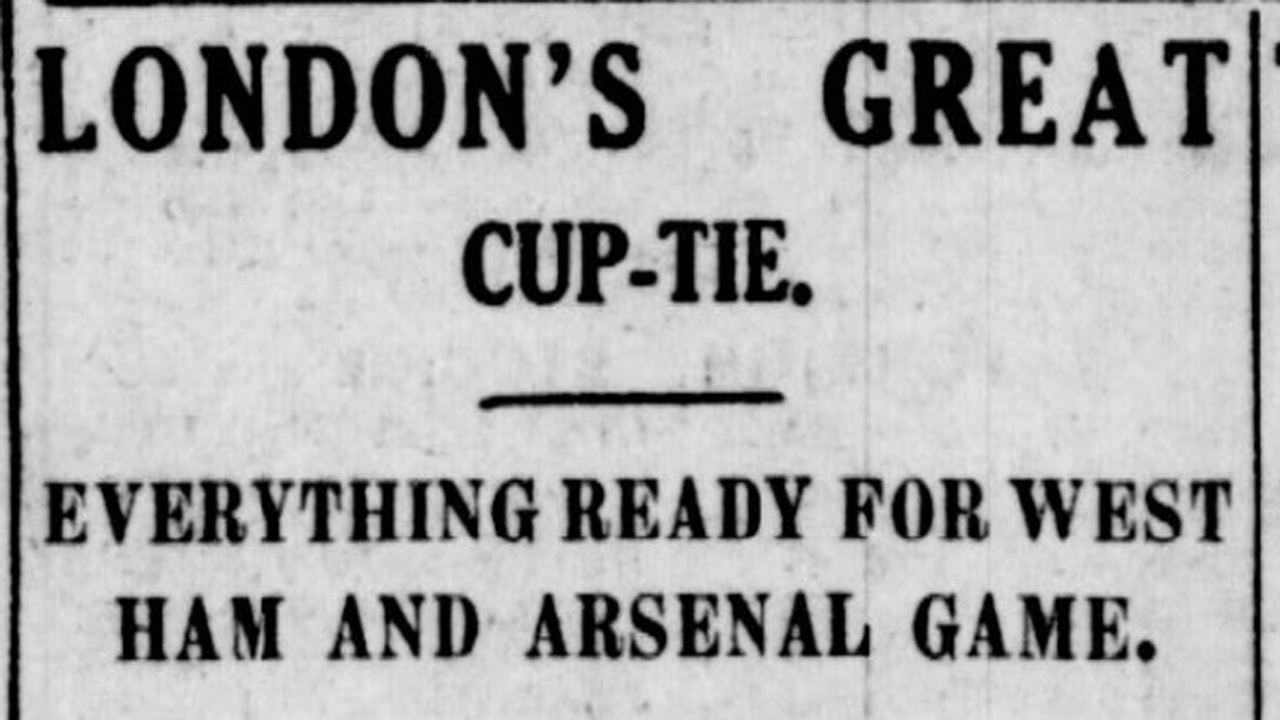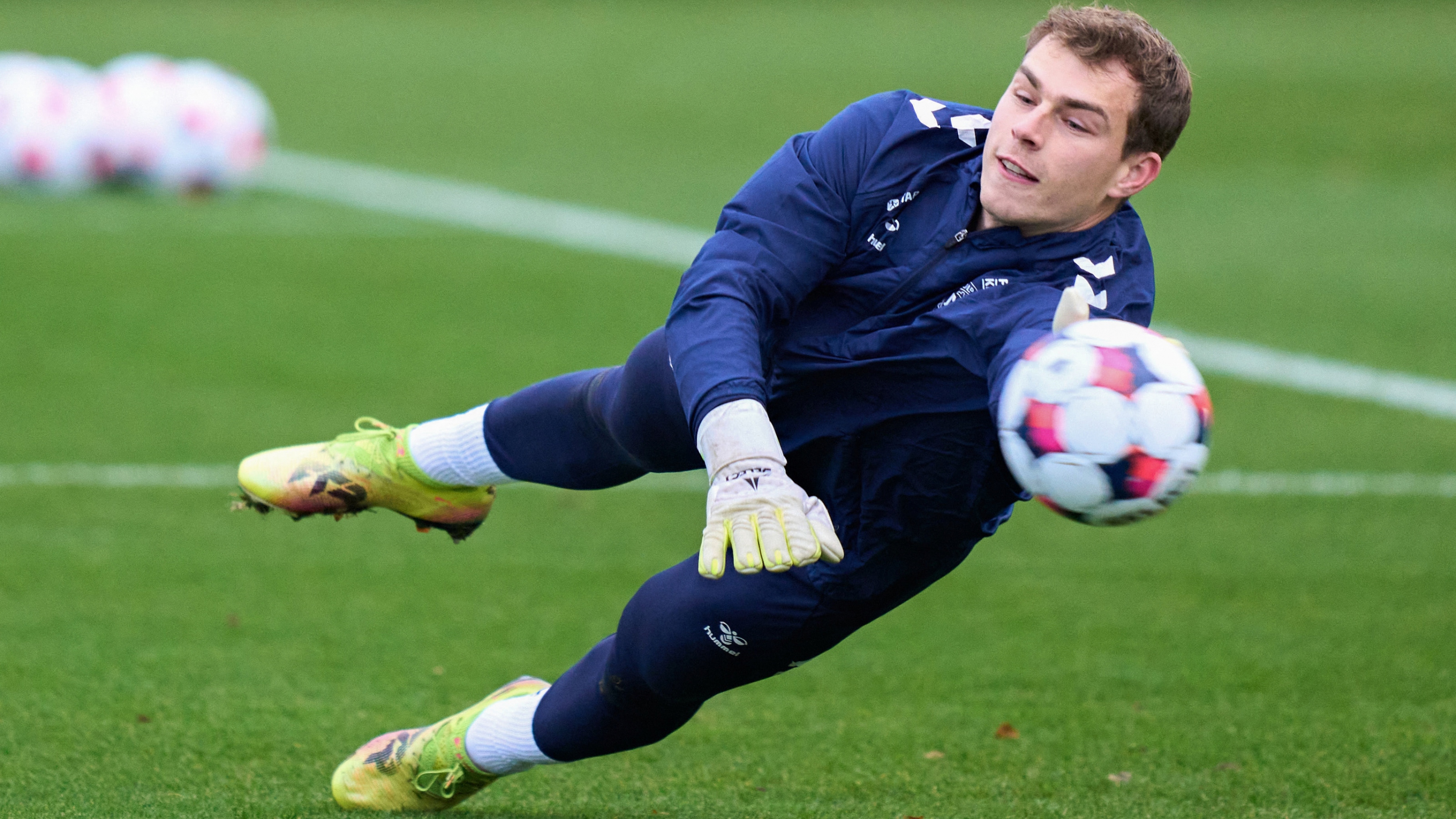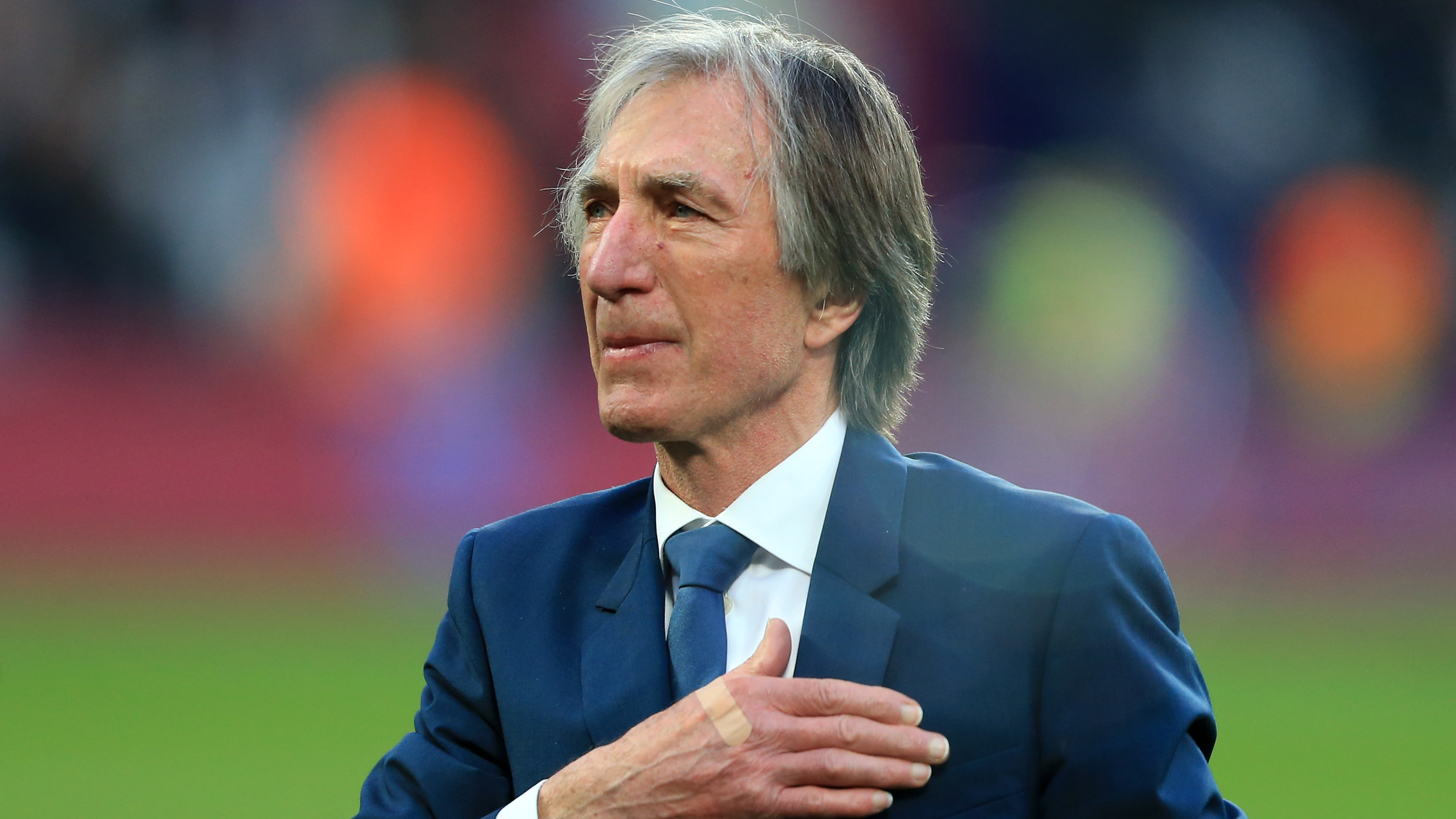With a capacity of 62,500, West Ham United’s London Stadium is the fourth largest football ground in the country, below only Wembley, Old Trafford and Tottenham Hotspur Stadium.
Back in 1930, however, the situation was different.
While the Hammers’ Boleyn Ground home had twice been extended in the years preceding, with the building of new East and West Stands and extensions to the terracing raising the capacity to around 40,000, it was not one of the largest in the old First Division.
In London, Arsenal’s Highbury could hold 73,000 spectators, Charlton Athletic’s The Valley had capacity for 75,000, Tottenham Hotspur’s White Hart Lane accommodated around 80,000, Chelsea’s Stamford Bridge 83,000. Even Millwall’s The Den had a capacity for 47,000, while Fulham’s Craven Cottage could hold up to 50,000.
Incredibly, of the teams mentioned, only West Ham and Arsenal were in the First Division in the 1929/30 season, while Tottenham, Chelsea, Charlton and Millwall were in the Second Division, and Queens Park Rangers, Fulham, Crystal Palace and Clapton Orient were in Third Division South.
So, when the Hammers and the Gunners were drawn together in the FA Cup sixth round at the Boleyn Ground on Saturday 1 March 1930, a suggestion was made that the tie be held elsewhere at a larger venue, giving a greater number of supporters the opportunity to watch their teams in action. These were the days before television coverage, of course.
Both clubs confirmed the huge interest, with West Ham’s announcement that ‘reserved seats for the cup tie with the Arsenal on 1 March have been trebly applied for’ and that ‘no further applications can be accepted’ was published in the London Evening News on 19 February.
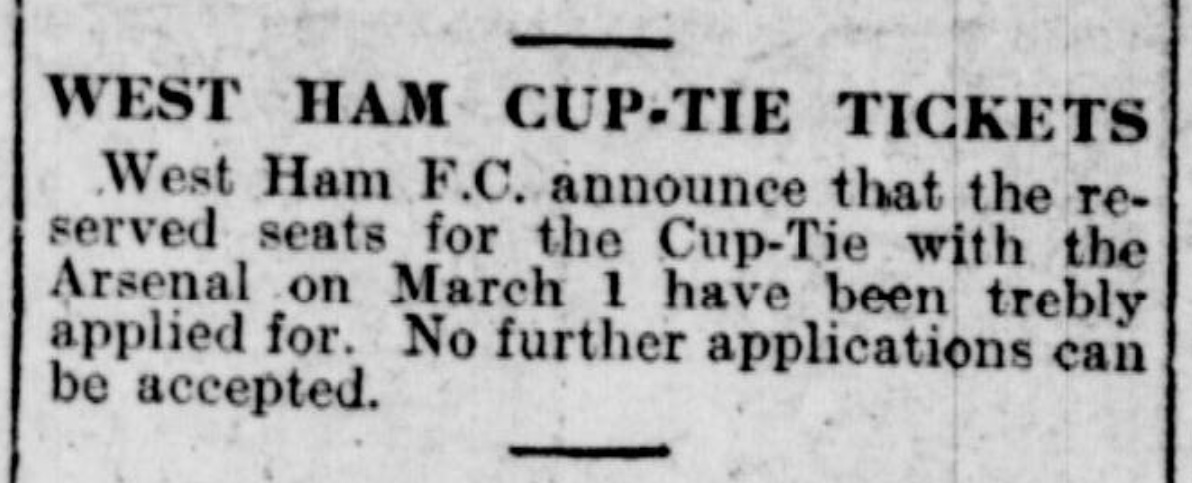
The previous day, 18 February, a short article appeared in The Scotsman entitled ‘NO CHANGE OF VENUE’, which explained:
“It was officially announced last night by the directors of the West Ham United Football Club that their tie against Arsenal in the sixth round of the English Cup will definitely take place at Upton Park.
“An offer was before the directors of a ground in the London district offering facilities for accommodating a large crowd, but West Ham decided not to waive their right of playing at home even though the Upton Park enclosure is, with the exception of that of Queens Park Rangers, the smallest first-class ground in the Metropolitan district.”
Three days later, Arsenal manager Herbert Chapman was in the Yorkshire Post confirming that Arsenal too had been inundated with ticket requests.
By Friday 28 February, every ticket had been sold and the two teams were ready for action, according to that day’s London Evening News.
“The last training is done and everything is in readiness for what should be one of the most important football matches in London’s cup-tie history - the battle between West Ham United and the Arsenal at Upton Park tomorrow.”
West Ham manager Syd King was quoted dismissing suggestions that goalkeeper Ted Hufton would miss the game with a shoulder injury, saying: “The rumour is without the slightest foundation.”
The stage was set for what the newspaper labelled ‘London’s own cup final’.
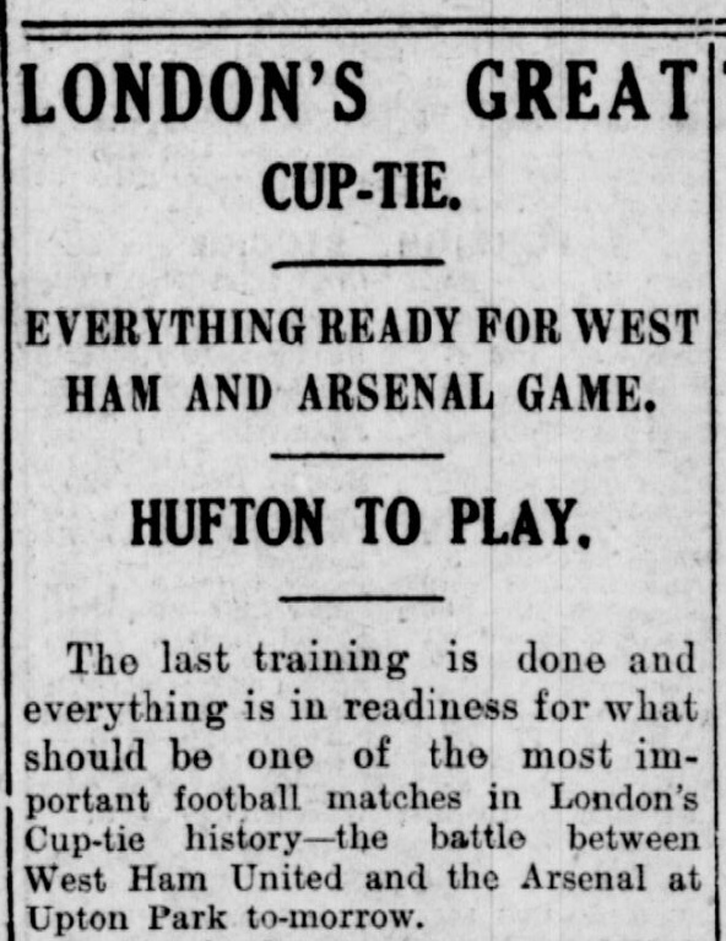
“The match starts at 3pm and the gates are expected to be opened at 12.30pm. It is fully expected that by that hour a big queue will have formed, despite the charge of two shillings for admission. All tickets for the stand were sold over a week ago.
“It is a match which every London football enthusiast will want to see. Not merely is it a cup-tie. It is London’s Own Cup Final, between London’s two premier teams.
“The element of rivalry is very strong and between the clubs, their methods and their players there are many strong contrasts.
“Mr King summed up the match when he said last Tuesday: ‘There is so little in it that it may be settled by the play of a few moments, an injury, or some other factor which has no relation to the superiority of one side or the other.'”
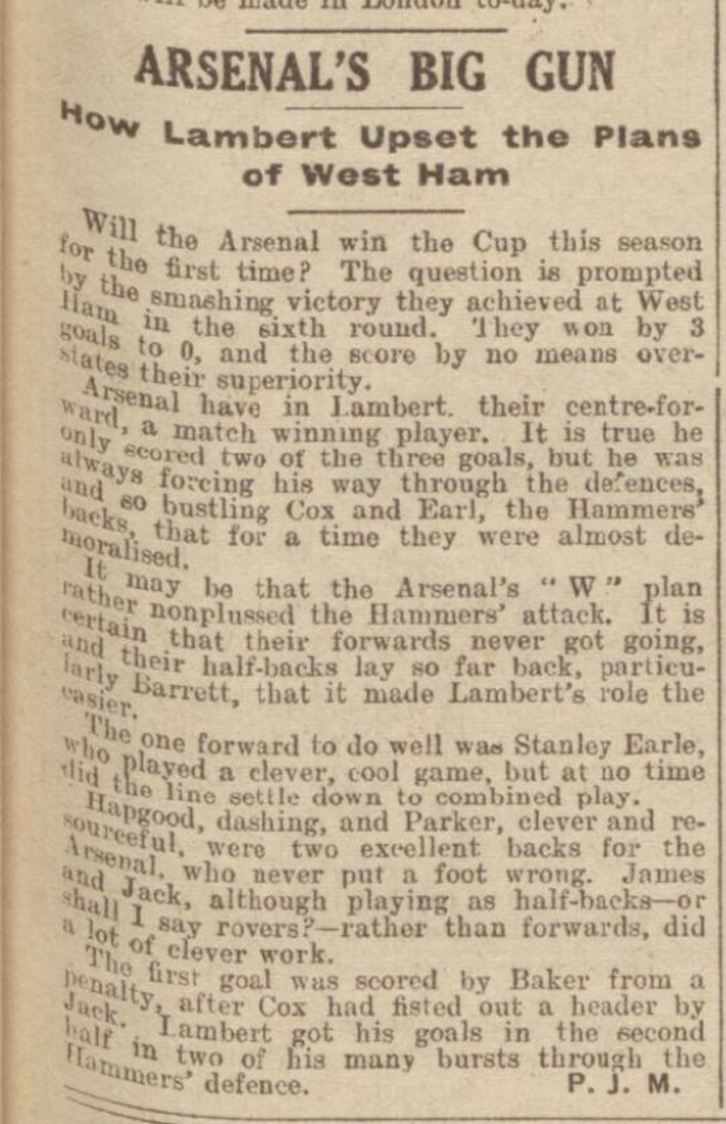
Some 40,492 supporters packed into the Boleyn Ground, with many arriving hours before kick-off as had been predicted, setting a new attendance record for the east London Club.
Sadly, King’s prediction was less accurate as Arsenal ran out 3-0 winners ‘and the score by no means overstates their superiority’, reported the Daily Mirror.
Long-serving right-back Alf Baker put the Gunners ahead from the penalty spot before half-time, the kick awarded after West Ham left-back Charlie Cox had punched clear a header by England international inside-forward David Jack.
Prolific Yorkshire-born forward Jack Lambert then scored two second-half goals to send the visitors through, and the home supporters heading for the exits.
West Ham would get some semblance of revenge the following weekend, when Vic Watson (two) and Stan Earle scored in a 3-2 First Division win, and the Irons would finish seventh in the First Division table, seven places above Arsenal.
But the north Londoners would go on to lift the FA Cup for the first time in their history, defeating Second Division Hull City in a semi-final replay, then First Division opponents Huddersfield Town at Wembley Stadium in the final.
